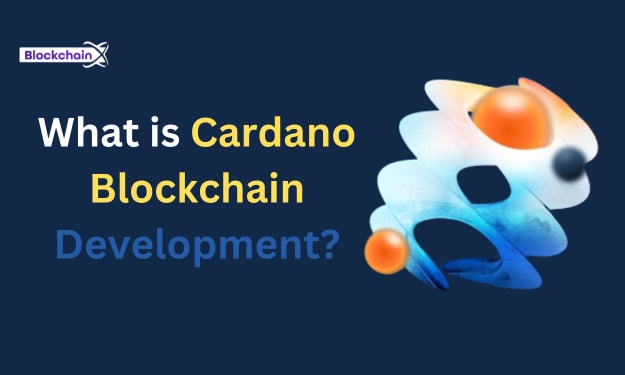The Dark Twin of the Sun That Ruins Our Lives
The evil twin of the sun that destroys our lives

Let's face it, as far as stars go, our sun is actually, well, pretty boring. Come on, there's nothing unusual about it. There are millions of similar yellow stars in the universe, and yet we love them. After all, it's the only star we have, and it gives us life. However, it wasn't always like that.
Once upon a time, the sun had a twin, possibly an evil one. What happened to it? Well, let's find out now. This is a giant molecular cloud. They're also sometimes called dark nebulae. Here, there are many interstellar clumps full of gas dust and piles of stars. These clouds have no clear boundaries and often take weird, crazy forms. You can even see some of them with the naked eye.
Look at the clear sky at night. They look like dark spots all across the bright Milky Way. This is exactly where our sun was born, about four and a half billion years ago. The sun originated from one of these molecular clouds billions of years ago. Waves of energy were passing by. Here, they collected all this material and compressed these clumps into dense nuclei. This was when a protostar was born.
The protostar was a ball of lukewarm hydrogen and helium, and then, millions of years later, the temperature and pressure inside the balls increased. As a result, a star was born called the Sun but not everything in this molecular cloud has turned into the Sun. The remaining materials began to revolve around the new star. And as you might have guessed, they gradually turned into planets including our Earth.
This is how our solar system was created. But it's quite possible that this is not the whole story and that at the same time, along with our star, another one was born. The lost twin of the sun was made from the same materials under the same conditions. But why do we think that it exists?
Well, recently, scientists have launched some statistical models to find out more about the birth of stars. And these models have shown that many stars appear not individually, but in clusters, or at least with one sibling. After more research, scientists confirmed that most stars that form inside molecular clouds are born with a companion. Sometimes these companions stay together. For example, a small star will revolve around a large one. They can even form double, triple, and other star systems, and sometimes their paths may diverge forever.
This probably happened to our sun, as well. It could have had a sibling too, perhaps not even one, but a whole cluster of little brothers and sisters and one bigger twin with a similar mass and other characteristics. But if that's the case then, where are you, our lost twin?
Well, we have one hypothesis and according to it, this twin may not be as good as it seems. In the 1980s, scientists began to notice a certain pattern in the Earth's history. Approximately every 27 million years, give or take, large-scale extinctions occurred on our planet, pretty strange, right. Every 27 million years in the history of Earth, some kind of catastrophe occurred that changed its biosphere forever as if something as scheduled cyclically caused them.
Then an astronomer, Richard Mueller, suggested that there may be something that caused the events. A certain celestial body, according to him, could be a dwarf star that we can't see, because of how dim it is. It could be located about one and a half light years away from us. This star rotates around the Sun in a huge orbit and it approximately takes a whopping 27 million years for it to finish its orbit.
When it gets closest to the sun, it starts to cause complete chaos while approaching us. This troublemaker changes the trajectories of comets in the Oort cloud or the Kuiper belt. As a result, all these comets start to rush straight toward us, crash into the Earth, and cause mass extinctions just like it was with dinosaurs. This hypothetical star was named Nemesis. It's the name of the ancient Greek deity of Retribution What is it, and why is it getting even with us?
Perhaps it didn't like that the sun had once almost completely consumed a molecular cloud's dust and gas, remaining a relatively large star while the twin remained dark and small, and that in the end it had to fly away in the middle of nowhere.
Anyone would find this annoying. Whatever this mysterious Nemesis is, scientists have proposed a variety of theories about it. It could be a brown or red dwarf, the remains of a star that has used up all of its fuel, or it could even be a rogue planet larger than Jupiter. Whatever it is, its existence isn't particularly pleasant for us, but our efforts to find it have so far been unsuccessful, and we haven't seen any indications of it.
Recent studies have called into question the theory of regular mass extinctions. If you look more into the fossil records, you'll notice that these catastrophes occurred rather randomly rather than on a clear schedule. Now scientists doubt if Nemesis may actually exist. They also say that any star moving in a similar orbit would be very unstable, and it's very unlikely that it could have survived for that long. But despite the lack of clear evidence, Nemesis had become quite famous online.
Many articles and news clips still mention it in different contexts. They like to write off any dramatic events taking place in the world, like asteroid falls, tsunamis, and so on, on this mysterious star. So now all this may seem like a typical urban legend, but let's not forget about something important. Even if Nemesis itself doesn't exist. It doesn't mean that the sun didn't have a twin. First of all, everything we talked about at the beginning is still relevant.
Most stars aren't born alone. The probability that our sun also had a sibling is still very high. Secondly, there may be evidence of the existence of this lost twin, which is probably somewhere in the Oort cloud. This is a huge cloud at the outer limits of our solar system. It consists of a bunch of comets and other cool rocks. Now scientists believe that this cloud stores various remnants and fragments of everything that remained after the birth of our solar system.
It's like a huge museum of our past so in this Oort cloud. Scientists have noticed something interesting. Basically, this region seems to be too heavy. What the Oort cloud actually looks like doesn't correspond to our current models of the formation of the solar system. It's too heavy because there are some remnants of something in it.
So there used to be something in the solar system that we don't know about yet. But when scientists included a possible second sun in their calculations, it fit just right like a missing piece of a puzzle. The lost twin perfectly matches the Gap in the weight of the Oort cloud. So the sun almost certainly had a twin. But what happened to it and where is it now? Unfortunately, this star is most likely already very far away.
Probably after their birth, the son and daughter, okay the Sun 2.0, spent only a couple of million years together and then they had to separate completely. Now the second twin may be hundreds of light years away from us. It can be anywhere in the Milky Way and theoretically we could find it but that would be quite difficult to do this. We need to find all the stars similar to our sun about the same age all over the Milky Way galaxy and even if we make a list of these stars what's next we have no way of knowing which one was really the twin of the Sun so the Lost twin will most likely remain lost and our sun will remain forever lonely.
What a sad story, but cheer up for us. It's probably for the best. We should probably be grateful for the sun's sacrifice because if we had had two suns, perhaps the solar system would never have developed into what it is today, and our planet might not even exist, which would mean that there might be no life. On the other hand, our sunsets would resemble those on Tatooine, which is cool.
About the Creator
Althea March
I am a writer who searches for facts to create compelling nonfictional accounts about our everyday lives as human beings, and I am an avid writer involved in creating short fictional stories that help to stir the imagination for anyone.






Comments
Althea March is not accepting comments at the moment
Want to show your support? Send them a one-off tip.